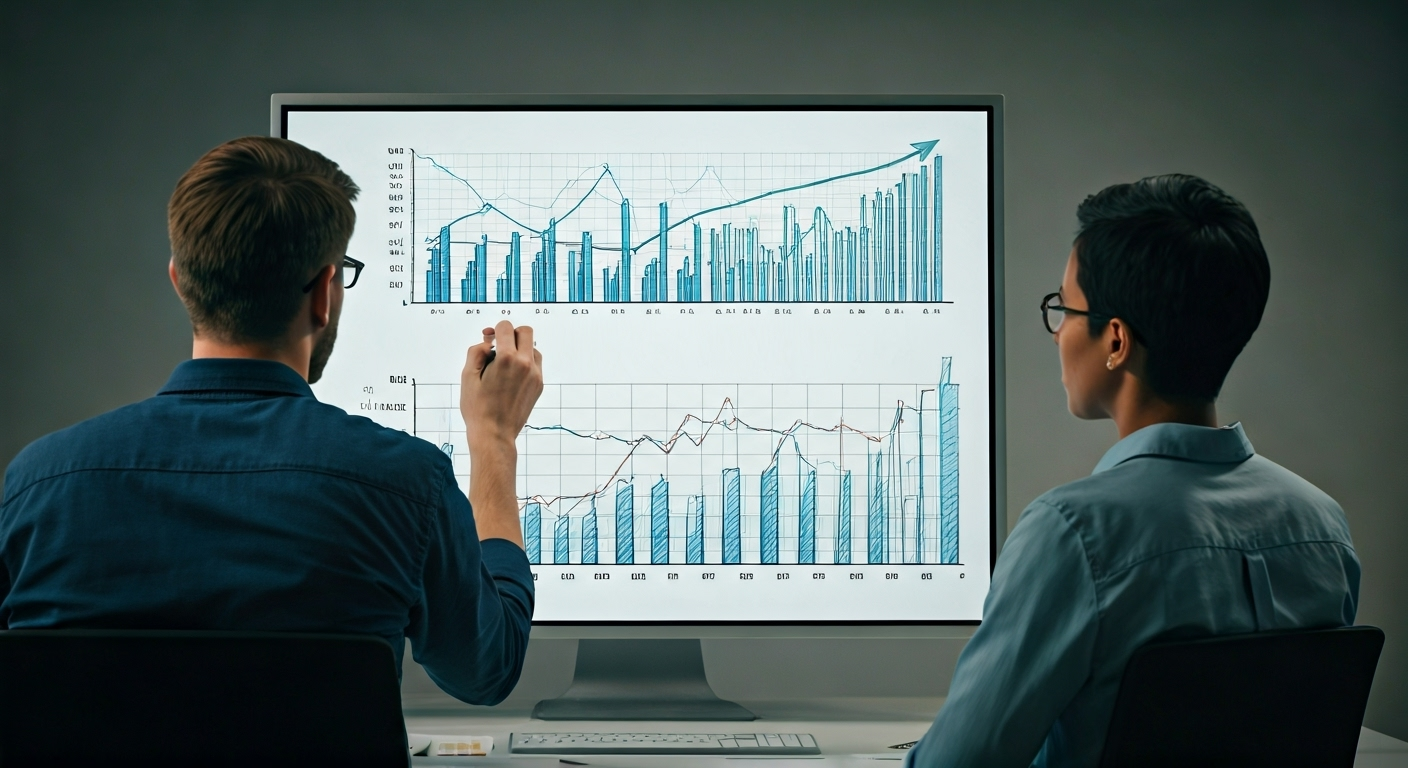Comprehensive Energy Data Management Strategies Explained
Comprehensive Energy Data Management Strategies Explained

Key Highlights
- Energy data management (EDM) is a way to collect, look at, and understand energy data. It helps the company achieve cost reduction by using less energy and saving money on energy costs.
- EDM is important for companies if they want to reach their sustainability goals. It helps lower carbon footprints and helps with the company’s environmental plans.
- New tools in analytics and reporting systems help boost operational efficiency. They also help companies follow all rules for regulatory compliance.
- When EDM is used along with maintenance systems, it makes the workflows smooth and steady. This can make the equipment work better and last longer.
- Using good EDM strategies makes energy efficiency better, which can help a company make more profit over time.
Introduction
The energy industry is going through big changes right now. This is why good energy data management is so important. EDM is about the systematic collection and review of energy data. It helps people make smart choices about energy use and find ways to cut costs. Today, organisations want better operational efficiency and care a lot about sustainability. EDM is now a key strategy for meeting these needs because the industry is getting more complex. By focusing on data management and energy usage, EDM helps companies meet their goals for compliance and caring for the environment. All of this is needed to keep up in the fast-changing world of energy.
Understanding Energy Data Management

Energy data management is important for modern companies that want to match their energy use with how well they work. This means they collect energy data in a planned way. They use analytics to get helpful ideas from this data. With this approach, organisations can see where they can do better and improve their energy usage.
The use of this idea has grown with new technology, like cloud-based systems. These let people look at data in real time. So, EDM helps bring down costs and support ways that are better for our world. It also helps companies make decisions about energy that fit well with their business plans.
Key Concepts and Definitions
Energy data management is about some main ideas that help us get better at using energy. First, there is the systematic collection of energy data. This step means using meters, sensors, and software tools to bring together all the energy data in one place. That lets companies see all the details about how much energy they use and when they use the most.
After collecting the data, data management systems use strong analytics tools to study the interpretation of energy data. This analysis looks for places where energy is wasted, shows energy use trends, and gives clear suggestions on what to fix. With these steps, companies can make their work better and increase energy efficiency.
Next, the interpretation of data is important. This takes the raw, messy data and turns it into clear numbers and facts that are easy to use. It helps a company match its energy plans with what it really needs each day. EDM also uses real-time analysis and reporting. That turns data into tools that help with rules you must follow, save cost, and work toward being more green. With good data management and optimization, your business can do better in these ways.
How Energy Data Differs from Traditional Energy Management
Energy data management gives a fresh point of view compared to the old ways of energy management. Traditional energy practices mainly work to cut down on energy consumption. They do this by using manual controls and rules that do not often change. But EDM uses data-driven insights to spot the exact spots that need work.
The way of looking at energy data is also different. Old methods usually depend on what happened in the past. EDM, however, uses real-time analytics. With this, you can predict what your energy use and costs will be. This helps you get ahead of problems instead of just reacting to them later.
The effect of EDM on operational efficiency is like nothing else. It uses cloud tools and AI systems to give you dashboards and systems that can grow with you. This makes EDM stand out, as it keeps your energy management up to date with the latest technology for ongoing optimization.
Importance of Energy Data Management in Modern Enterprises

Energy data management is important for every business that wants to use less energy and focus on sustainability. If companies look at their energy data often, they can spot where they are wasting energy. This helps them cut costs, fix problems, and reach their environmental goals faster.
EDM is good for a company’s bottom line. When you get real-time insights from EDM, you can make better choices for your business. With these clear facts, your company can make sure it follows laws, show more transparency, and see real changes. This can help both short-term use and long-term plans for sustainability.
Driving Efficiency and Cost Savings
Energy data management helps companies work better and spend less money. It is an important tool now for any business. Data from analytics helps smart decisions in many ways.
- Efficient energy planning: Companies can use advanced analytics to make good plans by learning from old data and trends.
- Reducing energy costs: Looking at real-time energy data can show the places where costs can go down.
- Operational efficiency: These systems find ways to use less energy when things get busy, which cuts down on waste.
- Budgeting improvements: EDM tools help make detailed energy budgets for the future.
When you use these ways to handle your energy data, you spend less over time and help build a strong business that is good for the planet too, with more focus on long-term gains and real sustainability.
Ensuring Regulatory Compliance and Sustainability
Working well in the energy sector means you have to follow the rules and care about the planet. With EDM, companies can check that their energy data meets the law and any environmental needs. For example, real-time dashboards help companies see if what they do matches local rules and stop them from getting fines.
EDM also helps with sustainability. It tracks greenhouse gas emissions so a company can make smart plans to use less energy and protect the environment.
Being transparent is key. EDM solutions let people see benchmarks for energy efficiency. This makes the company look good to stakeholders, consumers, and other people watching.
Core Components of an Effective Energy Data Management Strategy
Building a strong energy data management (EDM) plan means you need to focus on best practices. These include clear data collection, using analytics, and improving how your daily work gets done. A good plan has ongoing checks. This helps you get real insights to boost how things work.
When you use new technology, energy data management can help your energy systems match with your sustainability goals. It can also help you cut down on what you spend. With the right optimization steps, a company can take charge of its resources. This leads to better results and saves money over time.
Data Collection and Integration Techniques
Effective data collection and integration are at the core of EDM. Organisations use different ways to make workflows run smoothly:
| Technique | Description |
|---|---|
| Sensors & Meters | Collect energy data in real time. This helps with quick analytics. |
| Cloud-Based Tools | Let you store and get energy-related information easily. |
| Data Lakes | Help handle large batches of energy data. These also allow deeper analytics. |
| Workflow Integration | Connect your systems with IoT devices. This gives a full view of your operations. |
These techniques help keep the process of handling data uniform. They make it easier to move from one step to another while keeping things correct and clear.
Leveraging Analytics and Reporting Tools
Analytics and reporting tools take EDM use to the next level. The system looks at energy data with AI to help spot things that are not working well. It can also help show what trends may show up later. Real-time dashboards help people see equipment performance, energy costs, and any strange changes in usage.
Reporting tools work with analytics to create easy-to-understand summaries. You can make these reports fit your own system, which helps you make good decisions. Companies use cloud-based programs like Azure AI to get even better at looking ahead and planning.
When you bring together different workflows, everything comes into one place. This helps the whole system work better. It becomes easier for all parts to meet the needed performance standards.
Conclusion
To sum up, good energy data management is very important for businesses that want to grow in the fast-changing world today. If you take time to understand the key points of energy data and use strong plans, your company can get better use out of your energy, save money, and meet all rules that are set by the government. When you build your energy data management plan, be sure to focus on data collection, ways to bring your data together, and good analytics tools. These are what help you get the most from your energy resources. If you use these steps, your business can do well and help with big ideas like sustainability that are good for everyone. If you want to make your energy management better now, get in touch for a free consultation today!
Frequently Asked Questions
What industries benefit most from energy data management?
Industries such as manufacturing, logistics, healthcare, and energy utilities use energy data management to be more efficient. EDM can help these sectors cut costs, make processes better, and handle concerns about sustainability. By using data management and these energy data tools, they work better and improve optimization in what they do every day. This can lead to better operational efficiency and help them reach their goals for sustainability.
How does energy data management support sustainability goals?
Energy data management helps with sustainability. It keeps track of energy usage and shows how much energy and emissions there are. The analytics in these tools help you see where you can cut down, which supports greener habits. Being open and honest about energy data and reporting allows everyone to stay on the same path with long-term environmental goals.
What role does software play in energy data management?
Software makes edm work easier by using analytics, real-time monitoring, and makes it easy to link different workflows. Cloud-based systems help with energy efficiency by giving you tools that help you see problems before they happen. They also make sure handling data is easy at all times, which is key for good day-to-day work.
How can organizations ensure data accuracy and security?
Data accuracy is kept up by using planned ways to collect it, like sensors. Cloud solutions also have strong safety features. Rules that follow regulatory compliance help keep data safe and stored the right way. This matches the central aspect of energy management, making sure everything works well together.
What are the first steps for implementing an energy data management system?
Organizations need to start with a clear process for data collection. They can do this by using meters and sensors. The next step is to use cloud-based analytics. This helps them see energy consumption patterns right away. To get the best results, planning should match best practices. That way, they can make the integration go more smoothly.



